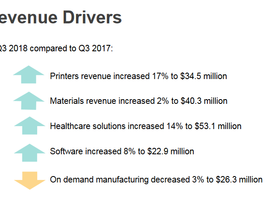
When you have your 3D model, you have to go through a slicer program that will generate the code you need for the printer to work. Of course, you will have to experiment with slowly getting to know your printer and what parameters you can change to improve your work. With additive manufacturing this is essential now.
3D printing technology has developed at a tremendous speed and, year after year, new forms are emerging to meet different industry needs. Knowing these options is important to choose the best one that best fits your business needs. Here we will cover only 3D printing in plastic, for metal and ceramics follow our future posts!
Plastic Filament (FDM / FFF)
Fused Filament Fabrication (FFF) technology is the simplest and cheapest of 3D plastic printing. That is why it is the most developed worldwide. It uses a plastic filament reel as the base material. This filament is pulled and heated at the printer extruder nozzle. The nozzle passes over the table depositing it, layer by layer, thus constructing the piece.
Image result for 3d printing
It is quite simple to use, to understand and to design for it. In a short time it is possible to achieve very good results. FFF is perhaps the technology with the widest range of materials available from flexible plastics to those of high mechanical strength like Nylon. There is a large variety of materials developed and one as large as under development. Among them is the water-soluble Limonene, which makes it possible to print easily removable media.
In addition, FFF is the technology that requires the least after treatment. Only support removal and polishing are required if the appearance of the part is very important. When designing high-demand mechanical components for both SLA and it, you must pay attention to the print direction. The direction of the layers is slightly less resistant than the other two.

Stereo-lithography (SLA)
SLA printing is more complex in terms of material and post processing, but has an incredible degree of detail. This is a great choice when presenting the print piece is critical.
Image result for SLA print
It uses a liquid resin that polymerizes on contact with light. For the printing process the table is dipped in this resin, leaving a thin layer between it and the bottom of the machine. At the bottom of the machine are lasers that scan the resin at specific points causing it to harden? Once the scan is completed the table raises making room for the resin to fill which will become the next layer of the piece.
Its handling is complicated especially due to the strong-smelling resin and generally should not come into contact with the skin, requiring the use of gloves. The after treatment is also more extensive requiring time for all non-solidified resin to drain, support removal when present and curing under ultraviolet light.
Selective Laser Sintering (SLS)
The Selective Laser Sintering (SLS) process uses a plastic powder for construction. Firstly, this powder is deposited on the printing table in a thin layer. Then the laser scans the table sintering the dust in the regions where there should be a part. When this process is over, the table descends, a new layer of dust is deposited on the previous one and the process begins again.
